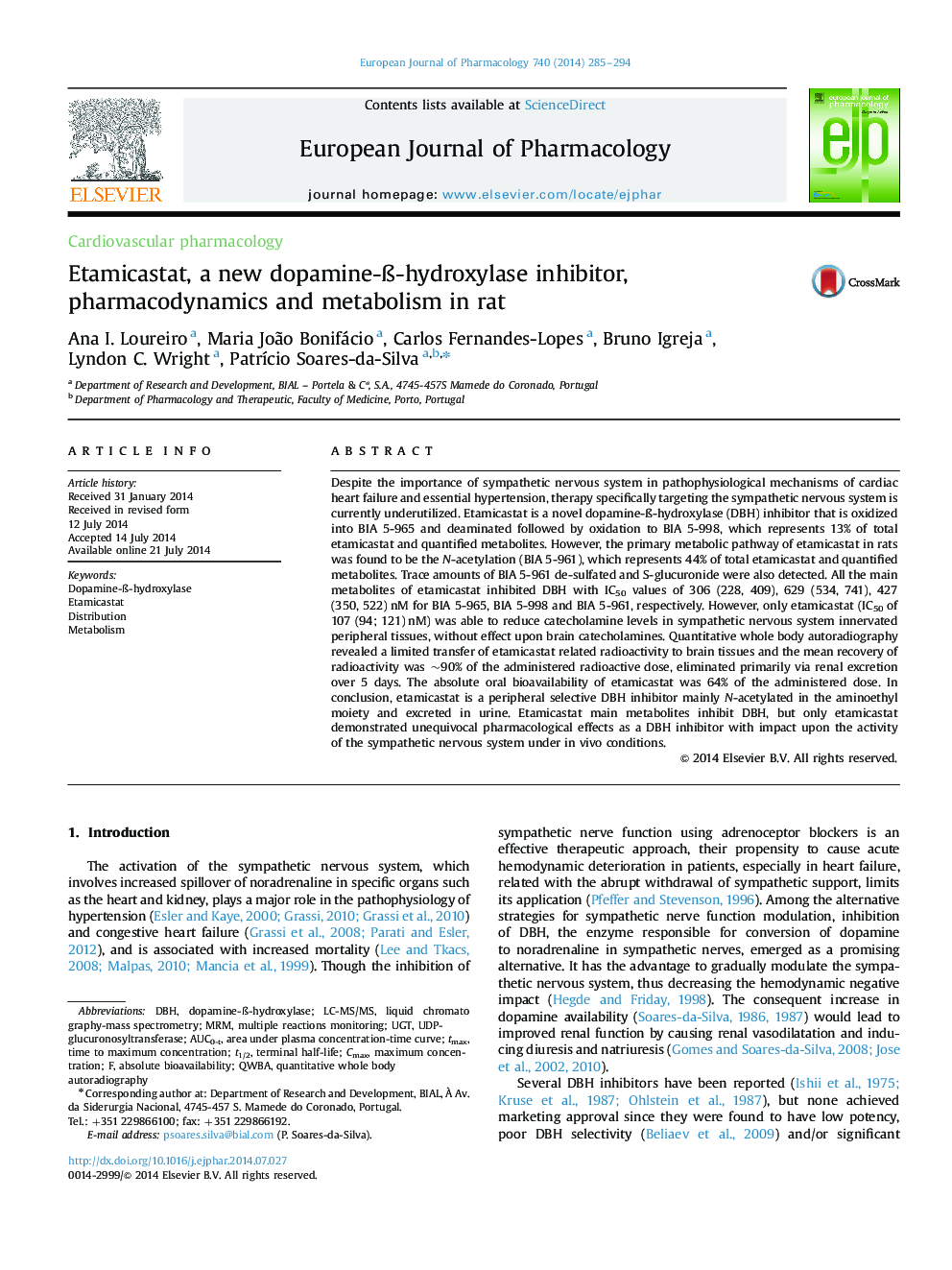| Article ID | Journal | Published Year | Pages | File Type |
|---|---|---|---|---|
| 2531651 | European Journal of Pharmacology | 2014 | 10 Pages |
Despite the importance of sympathetic nervous system in pathophysiological mechanisms of cardiac heart failure and essential hypertension, therapy specifically targeting the sympathetic nervous system is currently underutilized. Etamicastat is a novel dopamine-ß-hydroxylase (DBH) inhibitor that is oxidized into BIA 5-965 and deaminated followed by oxidation to BIA 5-998, which represents 13% of total etamicastat and quantified metabolites. However, the primary metabolic pathway of etamicastat in rats was found to be the N-acetylation (BIA 5-961), which represents 44% of total etamicastat and quantified metabolites. Trace amounts of BIA 5-961 de-sulfated and S-glucuronide were also detected. All the main metabolites of etamicastat inhibited DBH with IC50 values of 306 (228, 409), 629 (534, 741), 427 (350, 522) nM for BIA 5-965, BIA 5-998 and BIA 5-961, respectively. However, only etamicastat (IC50 of 107 (94; 121) nM) was able to reduce catecholamine levels in sympathetic nervous system innervated peripheral tissues, without effect upon brain catecholamines. Quantitative whole body autoradiography revealed a limited transfer of etamicastat related radioactivity to brain tissues and the mean recovery of radioactivity was ~90% of the administered radioactive dose, eliminated primarily via renal excretion over 5 days. The absolute oral bioavailability of etamicastat was 64% of the administered dose. In conclusion, etamicastat is a peripheral selective DBH inhibitor mainly N-acetylated in the aminoethyl moiety and excreted in urine. Etamicastat main metabolites inhibit DBH, but only etamicastat demonstrated unequivocal pharmacological effects as a DBH inhibitor with impact upon the activity of the sympathetic nervous system under in vivo conditions.
